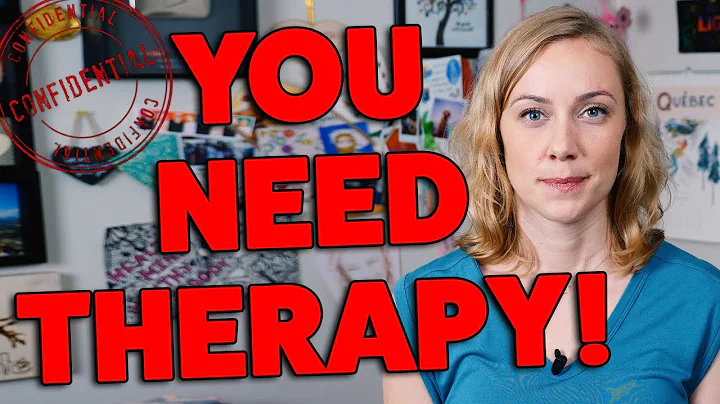Children with autism are called "children from the stars". Although this name sounds very dreamy and nice, for children, autism is like a nightmare.

With the rapid development of social economy, people's life pressure is getting greater and greater. Most people are usually busy with work. Even after having children, they will keep running around to make more money. They often leave less time for their children and often ignore their children's mental health. According to incomplete statistics, the incidence of autism in China is as high as 0.7%. Don’t underestimate this number. There are almost 14 million autistic patients in my country, and the number of children with autism is as high as 2.5 million or even more.

Autism, also known as autism, is one of the most common developmental diseases in children with high incidence and is also a disease that seriously affects children's development and lasts for life. As children grow up, parents should pay more attention to their children's language and personality behavior, and treat them as soon as they find problems to ensure that their children grow up healthily.
What is autism in this article? What are the symptoms? Possible reasons? How should parents discover it early? Several aspects are introduced to
1. What is autism?

Autism is a biologically based neurodevelopmental abnormality manifested as persistent social interaction and interaction disorders, as well as restricted and repetitive behavior, interests and activity patterns.
2. What symptoms are autism manifested as
(1) Typical characteristics appear within 2 years of age
In this age group, ASD usually occurs when caregivers or primary care medical staff find speech/language development delay . In a few days, it may also be found that does not have eye contact and social interest. may be limited. Failure to pass the ASD screening test (such as the modified Infant and Toddler Autism Screening Scale) may also indicate ASD.

(2) Social skills stagnate after early normal development.
1/4-1/3 children with ASD are able to reach early language milestones, but they experience regression or stagnation of language, communication and/or social skills at age 15-24 months. This skill regression may occur gradually, suddenly, and may occur after delayed development or atypical development.
(3) Lack of social interest, lack of speech/language skills, or delay, obvious resistance to changes, and narrow interest are common characteristics of older children and preschool children.
(4) Children with less severe phenotypes can develop the disease as early as in kindergarten or after. children may show behavioral disorders (such as destructive behavior, excessive attention to their own hobbies and difficulty in following instructions), or symptoms of comorbidity (such as attention deficit hyperactivity disorder , anxiety). A more careful review of the overall development of a child may be required to discover social and language development abnormalities.
3. What is the cause of autism?

(1) genetic factors —ASD is caused by genetic factors that change brain development (especially brain nerve links), which affects the development of social communication skills and leads to narrow interest and repetitive behaviors. Genetic factors have a great promoting effect on the occurrence of ASD, which is supported by the following points: uneven gender distribution (the prevalence of is 3-4 times that of women, ), increased sanitary prevalence, high symptom of single-epidemic twins, and the risk of ASD increases with increasing kinship.
(2) Neurobiological factors — Neuroimaging, electrophysiological examination and autopsy analysis in patients with ASD show that brain abnormalities (especially atypical brain nerve connections) play an important role in the occurrence of ASD. Therefore, for patients suspected of ASD, a cranial magnetic resonance is generally required for evaluation.
(3)Parent age — Older parents (including both parents) when giving birth will increase the risk of ASD in offspring. Different studies compared different age ranges, but usually the age range of mothers was ≥30 to 35 years old versus 30 years old, and the age of fathers was ≥40 years old versus 30 years old. The relationship between older parents and increased risk of ASD in offspring may be associated with emerging spontaneous mutations and/or alterations in genetic blotting.
(4) Environmental factors and perinatal factors — Environmental factors include exposure to poisons, teratogens , perinatal injury and prenatal infection. There are few ASD cases that lead to it, but it may cause a "secondary blow" and thus change the existing genetic susceptibility factors of ASD.
4. How should parents discover
(1) Early indicator — Early signs of ASD often appear before 18 months of age and often cause parents’ concern. Parents may initially be concerned about their children’s delayed speech and language development or frequent tantrums. The manifestations of different ages include:
①6-month-age – reduced gaze; this difference cannot be recognized by the naked eye, so it is often difficult for parents to detect.
②6-12-month-age – Reduced behaviors of calling name responses, gazing at faces, social smiles and voices to others, and tend to focus on specific objects in the environment.
③12-24 months of age – The frequency of communication experience, interest or attention with others decreased; repetitive behavior; expressive and perceptual language delays; problems with eye contact, name response, pretending to play, imitate, and nonverbal (such as gestures) and language communication.
(2) Early warning signal — Important early symptoms and signs of ASD include:
1) Parents are worried about defects in social skills
2) Parents are worried about defects in language skills or behavior
3) Parents are worried about frequent tantrums or inability to tolerate changes
4) Language and social/communication skills delay
5) There is still no name response at 12 months of age
6) At 14 months of age, it is still impossible to point or gesture to express things of interest (such as pointing to a flying plane)
7) At 18 months of age, it is still lacking to pretend to play (such as "feeding" dolls)
8) Avoid eye contact or like to be alone
9) Can't understand other people's feelings or talk about their own feelings
10) Repeat words or phrases over and over (echoic words)
11) Give irrelevant answers to the question
12) Disturbate by slight changes
13) Have some strong interests
14) Clap hands, shake your body or turn around
15) Abnormal response to the sound, smell or taste of things

Early recognition is an important step to improve the outcome of autism, which helps: ①Develop an educational plan in advance; ②Family support; ③Provide appropriate medical care and treatment of related diseases; ④Genetic consultation (especially when children suffer from ASD-related diseases, such as Tuberous sclerosis ); ⑤ Individualized early intensive intervention based on the specific advantages, disadvantages and needs of children and families.
Therefore, when parents find that their children have some early warning signals, they must go to the nearby Children's Hospital in time to improve relevant examinations for scientific screening.











